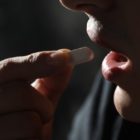
Opinion: Analysts Propose Racial Equity in Youth Probation
|
In 2018, about 6 out of 10 youth found guilty of an offense – more than 130,000 young people nationally — were placed on probation. Black youth have continued to be overrepresented among youth on probation, and at every point in the justice system. Structural racism drives harsher treatment of Black youth, who are more likely than white youth to be arrested, incarcerated, placed on probation and, when they don’t meet the terms of probation, plunged deeper into the criminal justice system. What’s the result? Black youth comprised just 14 percent of the general population, but 36 percent of youth on probation and 41 percent of incarcerated youth.
To help probation departments reduce the scope of probation, especially for Black youth, we just released a new, research-informed framework.








